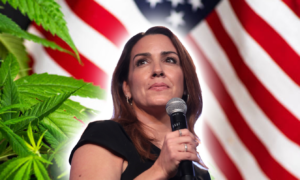The Minefield Of California Cannabis Labels

It’s more complicated than you might think
Over the last few years, I’ve been asked to review dozens and dozens of mockup cannabis labeling material to see whether they comply with California’s complex cannabis labeling requirements. I can’t recall a single instance in which I didn’t catch at least a few problems that needed changing.
Mistakes in mockup cannabis labels speaks less to sophistication of cannabis businesses–I’ve seen even extremely sophisticated businesses provide draft labels with mistakes–but instead to California’s over-regulation. There are simply too many rules about what must be included, and what is forbidden, on labels.
All of this springs from the Medicinal and Adult-Use Cannabis Regulation and Safety Act (MAUCRSA), which has detailed requirements for things that must go on the label such as a long, all caps warning that the package contains cannabis (duh), etc. As an aside, there are actually two different government warnings, one for cannabis and another for cannabis products, and I regularly see these getting mixed up!
The California Department of Public Health (CDPH), which regulates cannabis manufacturers, issued regulations under MAUCRSA to expand on labeling requirements. The rules for manufactured products (vapes, oils, dabs, etc.) are different from those for flower or non-infused pre-rolls in many situations. Even within the category of manufactured products, there are additional rules for edibles.
There are special rules for packaging and how to make it child-resistant. And if you are thinking about having separable interior packaging, guess what– even more different rules!
There are rules for font size, color, boldness, and the size of a certain required “universal symbol” which looks like a cannabis leaf inside a triangle (because of course a large, capitalized, bolded government warning isn’t enough). And by the way, the universal symbol’s size rules change for the interior and exterior packaging.
The rules require labeling cannabis with cannabinoid content, and have different standards depending on who does the labeling. While only manufacturers can label manufactured products, distributors and cultivators can label flower or pre-rolls. And if a distributor is adding cannabinoid content after arranging for state-mandated testing, well, there are additional rules for that.
CDPH’s rules also contain a host of prohibitions. Some make sense: businesses can’t have false or misleading content or try to make cannabis products look appealing to kids. But some of the requirements go a bit far. For example, cannabis can’t be labeled with the word “candy” or any variant of that word, because, you know, adults can’t eat candy. Edible products can’t even have a picture of the product contained in the packaging.
While CDPH’s rules apply to manufacturers, they are also incorporated by the other agencies. So, for example, a cultivator packaging flower or a distributor packaging non-infused pre-rolls would need to comply with these detailed rules.
Even a retailer or distributor buying or transporting pre-packaged cannabis is obligated to ensure that the packaging and labeling complies. I’ve seen cases in which licensees actually reject deliveries of products based on non-compliant labels, and I’ve seen more than one case where people complain due to issues with labels.
I should also mention that there’s a whole other area of compliance when it comes to labels known as Prop. 65. I’ve linked a few posts we’ve done on Prop. 65 below and won’t explain it in detail here, except to say that the state deems cannabis smoke and THC in general to be harmful, and requires warnings on labels that give consumers information about these risks (this is a big over-generalization so the articles below are helpful). While Prop. 65 isn’t enforced by the cannabis agencies, private plaintiffs can – and often do – sue or threaten to sue cannabis companies, so compliance here is key too.
Given policing within the industry (retailers who won’t accept goods with faulty labels, for example), agency oversight, and Prop. 65 litigation, it goes without saying that label review is a good idea. It’s also not the most time intensive or complicated process for attorneys experienced in it. But it can save a lot of headache after the fact. After all, who wants to re-order thousands of printed labels after catching a mistake?
Here are those Prop. 65 articles I promised:
- California Cannabis: Where Prop. 65 and Labeling Rules Meet
- California Cannabis Wake Up Call: Labeling and Proposition 65
- California Cannabis Label Alert: New Prop. 65 Requirements Coming
- Prop. 65 Potentially Expanding to Cover More California Cannabis Products
- What’s On Your Label, Part 3: California Cannabis Packaging and Labeling, and Prop. 65
- California Proposition 65 And Marijuana: Know Your Obligations
Source: Canna Law Blog




































